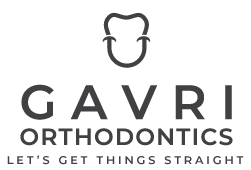If you’re a parent of a teen who’s about to embark on their orthodontic journey, you might be wondering whether Invisalign is a suitable alternative to traditional metal braces.
With its clear aligners and promise of a more discreet treatment, Invisalign has gained popularity among teens seeking a less noticeable way to straighten their teeth. But is it really the best option for your child?
Benefits of Invisalign
Invisalign offers several advantages that can make it an appealing choice for teens compared to metal braces. The benefits include improved comfort, aesthetics, and oral hygiene.
Comfort and Aesthetics
Invisalign aligners provide a comfortable fit. The smooth plastic material minimizes irritation on the gums and cheeks, which is often associated with metal brackets and wires.
Aligners being virtually invisible allows teens to maintain their smile during treatment. Many teens prefer the discreet appearance of Invisalign, which helps reduce self-consciousness about their orthodontic treatment.
Removability and Oral Hygiene
Invisalign aligners are removable, making it easy to eat and drink without restrictions. You can take them out during meals, eliminating concerns about food getting stuck in braces.
Additionally, maintaining oral hygiene becomes simpler. You can brush and floss without obstacles, reducing the risk of cavities and gum disease during treatment.
Regular cleaning of the aligners keeps them hygienic and clear, enhancing overall oral health.
Comparison with Metal Braces
Invisalign and metal braces differ significantly in several aspects. Understanding these differences can help you make a better choice for your teen’s orthodontic needs.
Effectiveness in Teeth Movement
Invisalign aligners utilize a series of custom-made trays designed to gradually shift teeth into the desired position. Metal braces use brackets and wires to apply constant pressure.
Both methods effectively align teeth; however, the speed of results can vary based on the severity of the orthodontic issue.
For simpler cases, Invisalign may achieve results in less time. More complex issues might require metal braces for more precise adjustments.
Treatment Duration
The average treatment duration for Invisalign ranges from 12 to 18 months, depending on individual needs. In contrast, metal braces often take approximately 18 to 24 months but can extend beyond that for more severe misalignments.
Aligners necessitate wearing them for at least 20-22 hours daily to ensure optimal effectiveness, while metal braces remain fixed for the entire treatment duration.
Your teen’s compliance and case complexity will influence the total length of treatment in both cases, making it essential to consider their lifestyle when making a decision.
Considerations for Choosing Invisalign
When evaluating Invisalign for your teen, several key factors come into play. Understanding cost factors and compliance requirements can guide your decision.
Cost Factors
Costs for Invisalign can vary significantly based on your location, the complexity of treatment, and the orthodontist’s fees.
Insurance plans may cover a portion, reducing your out-of-pocket expense. Payment plans often exist, allowing you to spread costs over time.
Weigh these options against the costs for traditional metal braces. Review your financial commitments and consider long-term value associated with Invisalign’s comfort and aesthetics.
Compliance and Responsibility
Invisalign treatment depends heavily on your teen’s commitment to wearing aligners for 20 to 22 hours daily. Noncompliance can lead to extended treatment times or unsatisfactory results.
Assess your teen’s sense of responsibility regarding orthodontic care. If they can manage wearing the aligners regularly and maintaining good oral hygiene, Invisalign may be an appropriate choice.
Regular check-ins with the orthodontist will help monitor progress and ensure adherence to the treatment plan.
Conclusion
Choosing between Invisalign and metal braces for your teen can be a pivotal decision. If your teen values aesthetics and comfort while also being responsible enough to follow treatment guidelines, Invisalign could be an excellent fit. Its clear aligners offer a discreet way to straighten teeth and simplify oral hygiene.
However, if your teen faces complex orthodontic issues, traditional metal braces might be the more effective choice. Ultimately, the best option hinges on your teen’s specific needs and lifestyle.
Consulting with an orthodontist will ensure you make an informed decision that aligns with your teen’s goals and requirements.
Frequently Asked Questions
What is Invisalign, and how is it different from metal braces?
Invisalign is an orthodontic treatment using clear plastic aligners to gradually straighten teeth. Unlike traditional metal braces, which use brackets and wires, Invisalign is nearly invisible, removable, and tends to be more comfortable, minimizing mouth irritation.
What are the benefits of choosing Invisalign for teens?
Invisalign offers several advantages including improved aesthetics, comfort with smooth aligners, easier oral hygiene, and the ability to remove the aligners for eating and drinking. This can make the treatment process more appealing for teenagers.
How much does Invisalign treatment cost compared to metal braces?
Invisalign typically ranges from $3,000 to $8,000, while traditional metal braces cost between $2,500 and $6,000. Costs can vary based on individual cases, and insurance may cover a portion of the expenses.
What is the typical duration of Invisalign treatment?
Invisalign treatment generally lasts between 12 to 18 months, depending on the severity of the misalignment. In contrast, metal braces usually take longer, often ranging from 18 to 24 months or more.
What compliance is required for effective Invisalign treatment?
For optimal results, teens must wear their Invisalign aligners for 20 to 22 hours daily. Noncompliance can lead to extended treatment times or less satisfactory results, making it crucial to assess a teen’s responsibility in adhering to their treatment plan.
Can Invisalign be used for complex orthodontic issues?
Invisalign is most effective for mild to moderate alignment issues. For more complex cases, traditional metal braces may be preferable due to their ability to apply consistent pressure and easily address intricate adjustments.
Explore Invisalign for Teens at Gavri Orthodontics in Richmond, TX
Give your teen a confident smile with Invisalign at Gavri Orthodontics. Our team specializes in comfortable, discreet treatment that fits busy school schedules. Schedule a consultation today—spots are limited, so don’t miss the chance to get started.

